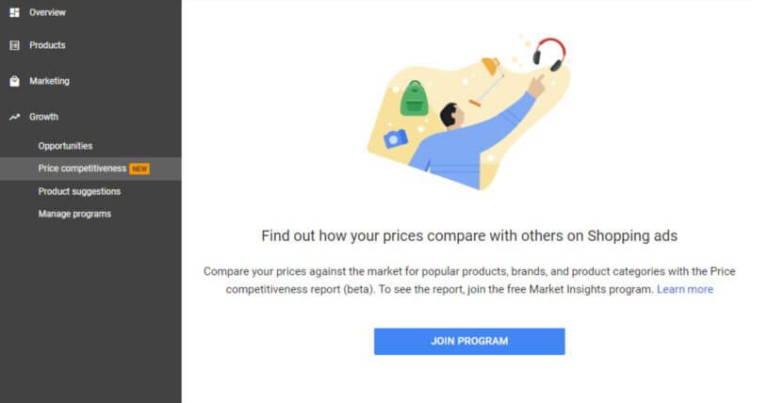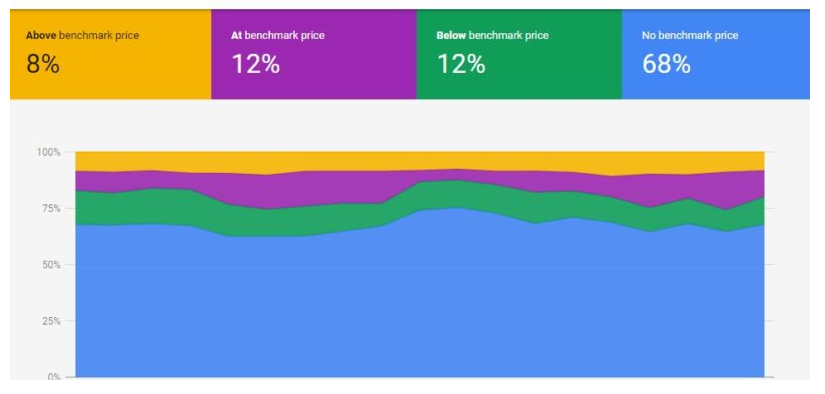What is the Google Shopping price competitiveness ratio?
Recently deployed in Beta version in Google Merchant Center, This feature allows sellers to compare the price of their products with those of competitors. Time-saving data analysis becomes non-negligible.
The tool provides an overview of e-merchant product prices without having to do this manually and on a one-to-one basis, giving a market overview at a glance. The device is ideal for identifying items requiring price adjustments.
The analysis offered by Google depends on the breadth of the product range analyzed: the more merchants offer a product for sale, the more accurate and relevant the available data will be.
Who is eligible for the competitive pricing report?
The report is not yet available to all sellers. You must first be registered with program " Market Insights ".
In addition, e-tailers must also meet certain Google requirements, including participation in the Shopping ads or Shopping Actions.
Where can I consult the competitive pricing report?
The report can be found in the " Growth "You'll find it in the Google Merchant Center left-hand menu.

Product price competitiveness can be analyzed by category, country and brand.
How to interpret the competitive pricing ratio?

The subtlety of the report lies in the presentation of the percentage of products (and not the number). offered in Google Shopping compared to a reference price.
Determining this benchmark by Google will depend on the amount of data available to establish it.
Four segments are available to analyze product price competitiveness:
- higher than the reference price
- equal to the reference price
- below reference price
- no reference price: Google lacks the data to define it
The " higher than the reference price "indicates the percentage of sales for which the prices of the products offered exceeded the reference price by more than 1 %.
" Equal to market price "indicates the percentage of sales with products at less than 1 % of the reference price.
And " Below market price "The percentage of 1 % products higher than the benchmark.
It is also possible to view the number of clicks that a product has received over a given period; as well as the history of commodity variations in relation to the reference price.
This new report is useful for e-tailers as product pricing can play a role in both increasing their visibilityand in the volume of Google Shopping campaign traffic.
On the other hand, in early 2019, Google announced that " competitive pricing and seasonality "will soon be intelligent bidding factors for shopping campaigns.
